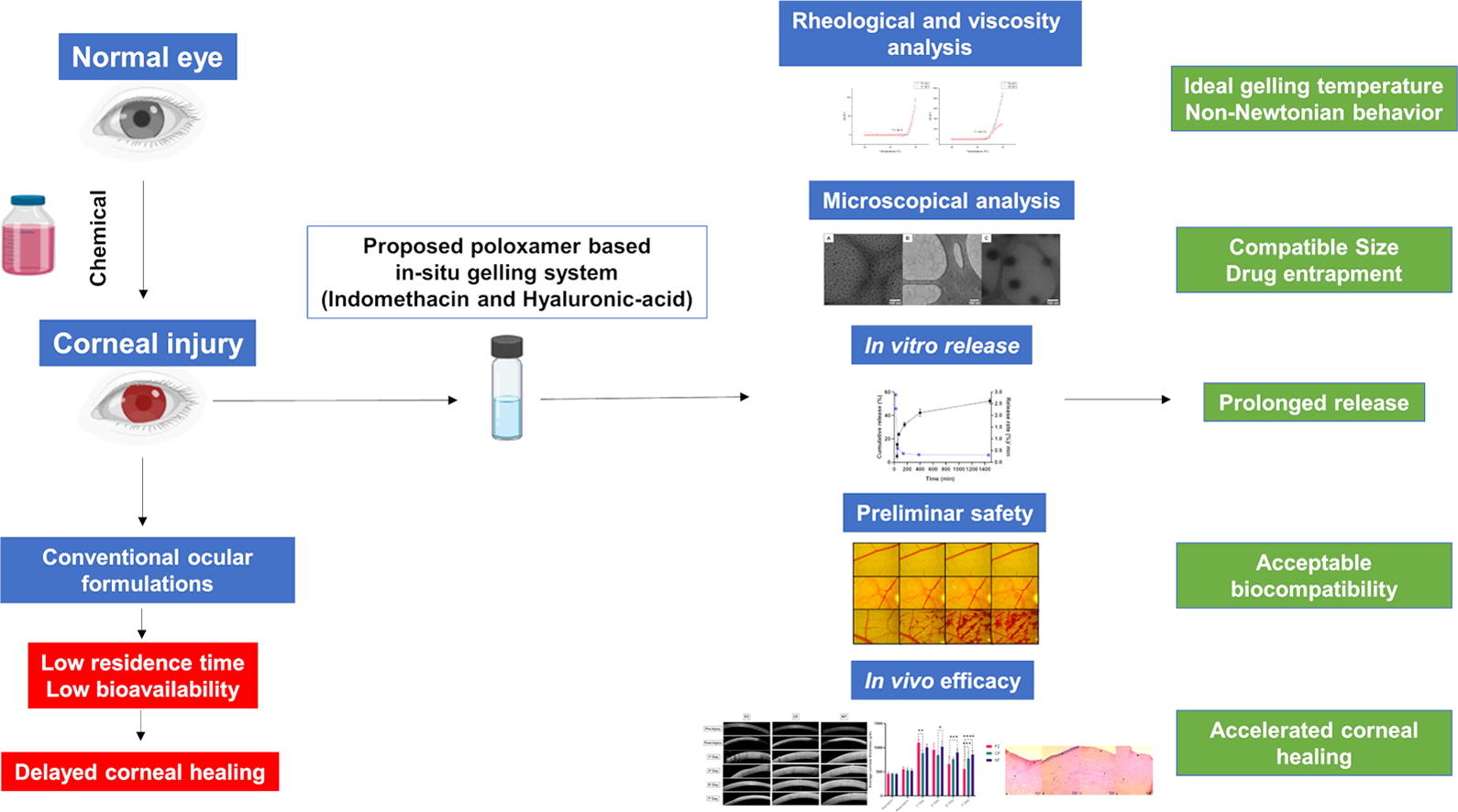Thermoresponsive in-situ gel containing hyaluronic acid and indomethacin for the treatment of corneal chemical burn

Ocular chemical burns are prevalent injuries that must have immediate and effective treatment to avoid complications. Aiming to improve bioavailability and efficacy, a poloxamer-based thermoresponsive in-situ gelling system containing hyaluronic acid and indomethacin was developed. Formulations with different polymeric proportions were screened through rheological measurements resulting in an optimized system (F2) with gelling temperature of 34.2 ± 0.11 °C. Its maximum viscosity varied from 77.33 mPa (25 °C) to 82.95 mPa (34 °C) following a non-Newtonian profile and a pH of 6.86 ± 0.01. No incompatibilities were found after infrared analysis.
Polarized light microscopy and cryo-transmission electron microscopy have demonstrated micelles of nano-sized dimensions (21.86 nm) with indomethacin entrapped in the core, forming a polymeric network under heating. In vitro tests revealed a cumulative release of 59.75 ± 3.17% up to 24 hours under a sustained release profile. Results from HET-CAM assay indicated that F2 was well tolerated. Corneal wound healing was significantly faster in animals treated with F2 compared to a commercial formulation and an untreated group. These findings suggests that F2 could be an efficient system to delivery drugs into the ocular surface improving wound healing.
Read more
Matheus Augusto de Castro, Pedro Henrique Reis, Christian Fernandes, Ricardo Geraldo de Sousa, Thomas Toshio Inoue, Sílvia Ligório Fialho, Armando Silva-Cunha, Thermoresponsive in-situ gel containing hyaluronic acid and indomethacin for the treatment of corneal chemical burn, International Journal of Pharmaceutics, 2022, 122468, ISSN 0378-5173, https://doi.org/10.1016/j.ijpharm.2022.122468.

